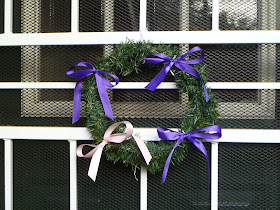There’s a rabbinic tale which describes a man who had such trouble finding his clothes when he arose in the morning that he was reluctant to go to bed, so daunting were the difficulties facing him when he arose. One evening he took special pains to carefully note on a piece of paper where he put each article of clothing. The next day he took the list and was delighted to find that his shirt was precisely where the list indicated it should be. He put it on, then, yes, there were his pants...just where they were supposed to be! So it went until he was fully dressed. “That’s all very well and good, but now, where am I myself?”, he asked with great bewilderment. “Where in the world am I?” He searched everywhere, but without success. He couldn’t find himself.
How often do you and I wander through the world, asking “Where in the world am I?” Perhaps that’s why Scripture provides us with so many stories, among them the Christmas and Epiphany stories: to give us a clearer vision of who and where we are.
Israel, and ultimately, we as the Church are congregations formed in response to God’s initiative of grace. Adam and Eve were formed from the dust, the clay and spittle, and eventually disobeyed God. Yet they were also formed into a community which passed on it own life as well as God’s love.
The Hebrew Scriptures, particularly the Book of Exodus, are filled with stories about Israel’s plight in Egypt, its subsequent deliverance from bondage as slaves, and its long journey to Sinai where the transient wayfarers became a community which models hope out of despair, life out of death, as they’re led into the Covenant/Promise of God’s life and love.
The Christian Scriptures continue the storytelling of fishermen, tax collectors, and prostitutes being invited into a community centered on the person of Jesus of Nazareth, who, in the glorious Prologue of today’s Gospel (John 1:1-14), St. John names as God’s “grace and truth”, God’s Word of Love enfleshed.
Faith cannot exist in the abstract. It must issue forth in the way you and I live as a community in the world. According to John, as a community, you and I exist as a response to God’s gracious outpouring of love upon us. Who we are is formed around memory and identity. “...my whole being shall exult in my God,” shouts Isaiah in the first reading (Isaiah 61:10-62:3), “for God has clothed me with the garments of salvation, God has covered me with the robe of righteousness...” What we’re called to do and are doing is formed around vision and mission. “...to all who received him, who believed in his name, [the Word] gave power to become children of God...From his fullness we have all received, grace upon grace.”
All that is left is for you and me to go forth and, in the light of that “grace upon grace”, to write our stories of God’s love, to pass them on to others so that they, too, might discover who and where in the world they are.
The Hebrew Scriptures, particularly the Book of Exodus, are filled with stories about Israel’s plight in Egypt, its subsequent deliverance from bondage as slaves, and its long journey to Sinai where the transient wayfarers became a community which models hope out of despair, life out of death, as they’re led into the Covenant/Promise of God’s life and love.












